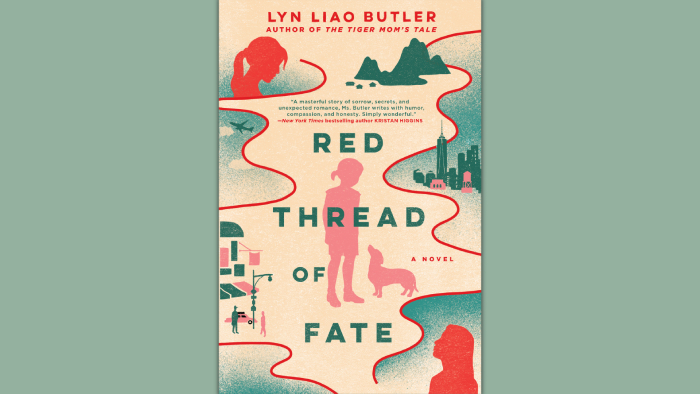You might have heard of the eastern legend of the red thread, an invisible bond said to tie together soulmates wherever they may be. But in a lesser known version of the tale, not all red threads need to be romantic.
Taiwanese American author Lyn Liao Butler, known for her 2021 release “The Tiger Mom’s Tale,” is back with “Red Thread of Fate,” which hits shelves today, Feb. 8. But a word of caution, if you’re looking for a story of harmonious relationships and one true loves, this might not be the Valentine’s Day read for you. The novel follows Tamlei Kwan, an elementary school teacher planning to adopt a toddler from China. When her husband, Tony, dies in an accident with his estranged cousin Mia, Tam suddenly finds herself the sole guardian of Mia’s 5-year-old daughter Angela and must finally face up to her family’s troubled past.

Fans of Amy Tan are sure to enjoy “Red Thread of Fate,” which spans a global scale and several decades past. As Tam tries to pick up the shattered pieces of her life, she uncovers different facets of a story she thought she already knew. Butler effortlessly conveys different senses of time via the novel’s non-chronological structure, transitioning between Tam’s present and Mia’s past to chop up the book and keep the pace brisk rather than plodding. This storytelling method also breathes life back into Mia and raises the sense of stakes for her—not an easy feat for a character already dead in the present.
Butler’s tight command of prose additionally assists in “Red Thread of Fate”’s pacing. Her language is simple, yet evocative, making for a genuinely page-turning read that audiences won’t want to set down. The novel’s mystery (no spoilers!) is introduced in the very first pages, hooking readers right off the bat, and each following chapter provides tantalizing breadcrumbs to keep Tam and readers going. That sense of suspense serves to keep readers thoroughly engaged through what would otherwise be a slow-moving, albeit poignant study of the grieving process and family ties.
However, the novel unfortunately lacks the same motion when it comes to dialogue, tending to stagnate and stall during conversations between characters. Speaking lines frequently read like pure exposition, over-indulging in details that could easily have been left for readers to piece together—for example, audiences might find themselves questioning if we really need to hear Tam thoroughly explain China’s current foreign adoption situation to her friend Abby. Against the rest of the book’s lean, factual style, the dialogue fails to carry the same level of realism and makes it hard to absorb the often vast quantities of information Butler tries to share.
“Red Thread of Fate” remains at its most engrossing during the novel’s quiet moments, in which Butler’s writing shines through Tam and Mia’s internal monologues. If readers can stick it out through the questionably phrased dialogue, they’ll be rewarded with a detective novel and valuable history lesson in one, a detailed examination of how seemingly insignificant actions and moments can lead to life-altering events.







